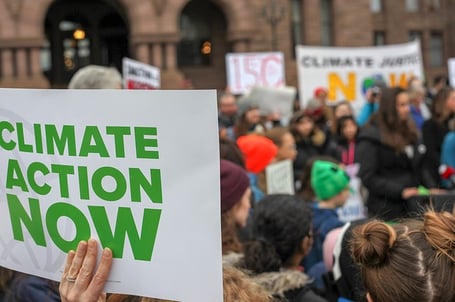
Cx Associates is a mission driven engineering firm, applying concrete solutions to complex problems. A subset of these problems requires solutions that are a lot less tangible than the engineering solutions we seek to implement every day. Take climate change, for example. While the symptoms of climate change are real-world and concrete (rising sea level, measurable increase in extreme weather events that can be charted and graphed), the solutions to climate change are often conceptual and fraught with uncertainties. There is plenty of research to suggest that humanity has the technical solutions to climate change well within its tool belt. The uncertainly lies in application. What does a carbon-free transportation system look like? What’s the right mix of electric and public transportation and bike riding? How will populations be impacted when these changes mold habits and limit choices?
It’s hard to know the answers to these questions until we arrive. Climate change mitigation experts have long opined that no single set of major transitions will work; rather, “The Solution” will be built of millions of actions by millions of players, moving us to a different reality incrementally. The climate crisis is a call to an “all hands on deck” societal response.
The challenge of quantifying External impact
 While we intend that our work represent one of those millions of actions toward a sustainable future, Cx Associates has struggled to quantify our impact on the climate. At a project level, we do not always have the data available to convert, say, a design review comment promoting energy efficiency into avoided carbon emissions. We try to quantify the external greenhouse gas reduction our work has produced through a process we call “Project Close Out”, during which managing engineers are asked to reflect on any major discoveries made during design reviews or testing and produce an estimation of energy saved. But this effort misses quite a lot.
While we intend that our work represent one of those millions of actions toward a sustainable future, Cx Associates has struggled to quantify our impact on the climate. At a project level, we do not always have the data available to convert, say, a design review comment promoting energy efficiency into avoided carbon emissions. We try to quantify the external greenhouse gas reduction our work has produced through a process we call “Project Close Out”, during which managing engineers are asked to reflect on any major discoveries made during design reviews or testing and produce an estimation of energy saved. But this effort misses quite a lot.
Shifting focus to internal measures
Recently, a working group within Cx Associates (of which I am a member) identified the development of a Climate Action Plan (CAP) as a worthy goal to better document our internal carbon reduction endeavors. A CAP is a roadmap to greenhouse gas reduction. At its simplest, it documents baseline emissions, goals (e.g., CO2 percent reduction by what year, climate justice), initiatives to achieve goals along with expected impact, an implementation plan, and metrics (how you will know your goal is achieved). We have come to realize that traditional CAPs are not a good fit for a small private business that sell services. Most CAPs are written for cities, towns, or universities, which are comprised of multiple, controllable emission sources. For example, if a university emits 200 MTCO2e per year to heat a campus, it has choices over how to mitigate that, whether it be by installing solar panels or purchasing power from a renewable source. Cx Associates rents its small offices and has no control over what turns on the lights.
Furthermore, we have discovered is that private businesses typically refer to their climate action document as a Climate Action Strategy (CAS). The CAS we have been exposed to are more focused on reducing manufacturing emissions and greening products, along with marketing efforts to consumers. This approach is not the best fit either, since Cx Associates sells its expertise, not a physical product.
Beyond emissions
 Add to the above that first and second tier emissions (i.e., emissions directly from company operations and emissions from energy inputs to company operations) for Cx Associates are very small and that we already more than offset our emissions through The Carbon Fund, developing a climate action document seems like the best fit for us. Because of our limited options, our document may well focus on advocacy and social justice initiatives rather than reducing measurable emissions, though the latter will certainly be a piece of it. While the former brings us full circle to a more uncertain, less concrete path forward, we hope the impact will be very real.
Add to the above that first and second tier emissions (i.e., emissions directly from company operations and emissions from energy inputs to company operations) for Cx Associates are very small and that we already more than offset our emissions through The Carbon Fund, developing a climate action document seems like the best fit for us. Because of our limited options, our document may well focus on advocacy and social justice initiatives rather than reducing measurable emissions, though the latter will certainly be a piece of it. While the former brings us full circle to a more uncertain, less concrete path forward, we hope the impact will be very real.


